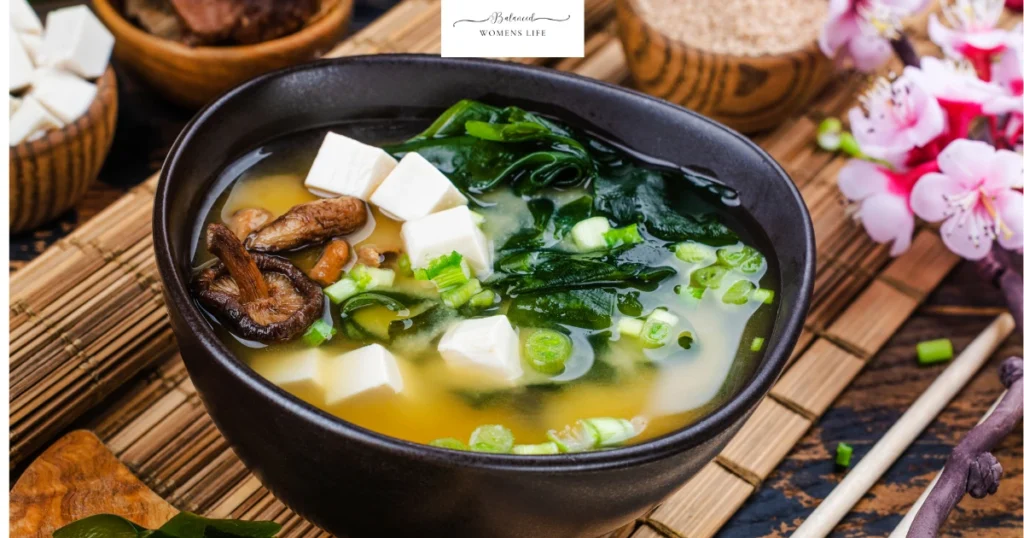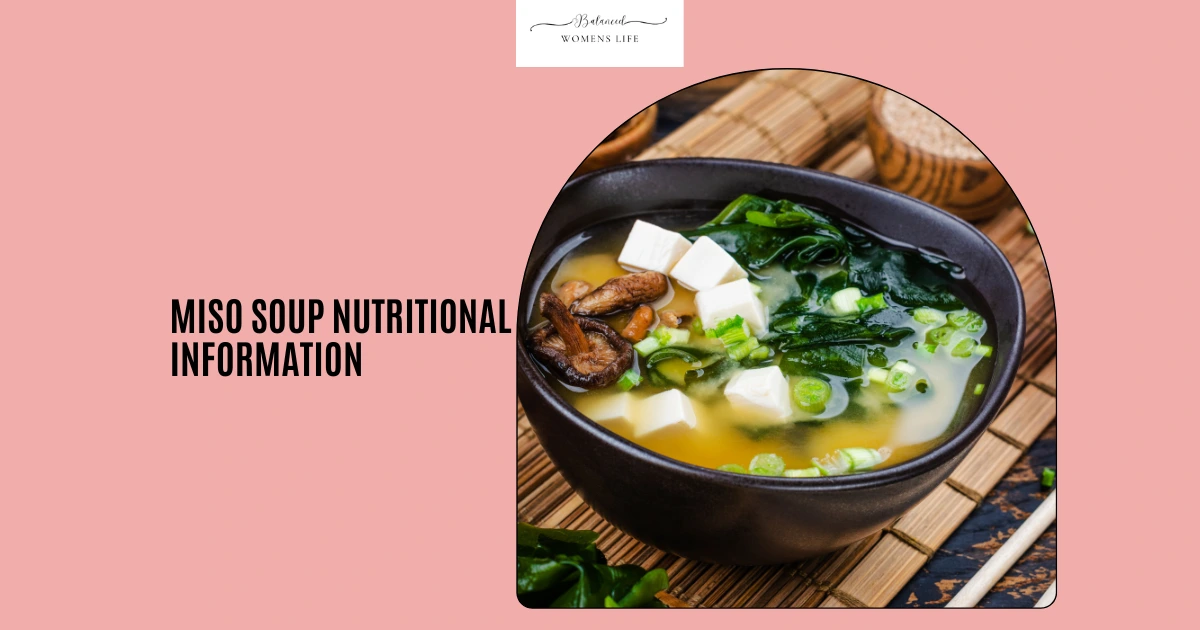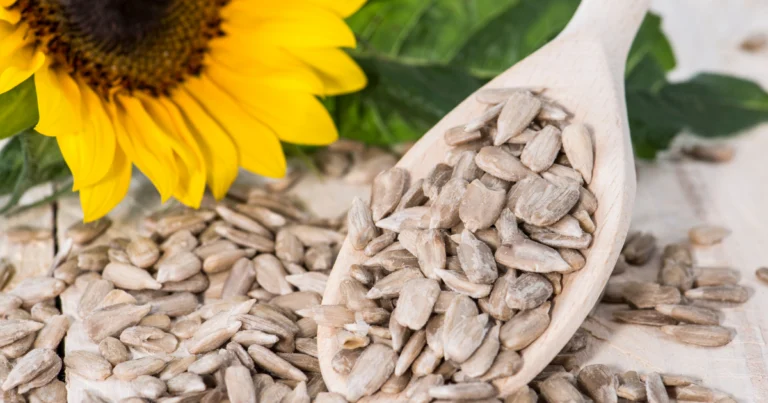Miso Soup Nutritional Information: The Magic in Every Sip!
Title: Miso Soup Nutritional Information: The Magic in Every Sip!
Discovering the Magic: Miso Soup and Its Nutritional Information
Miso soup, a staple in Japanese cuisine, is more than just a comforting and flavorful dish; it’s a nutritional powerhouse with a rich history. The savory umami broth, traditionally made from fermented soybeans, offers a surprising array of health benefits. In this article, we’ll dive deep into the miso soup nutritional information, uncovering the magic in every sip.
Miso Soup Nutritional Information: A Detailed Breakdown
Miso soup’s nutritional content can vary depending on the ingredients used, such as the type of miso paste, added vegetables, and tofu. However, a typical 1-cup (240g) serving of miso soup generally contains24:
- Calories: Approximately 59-84 calories156
- Protein: Around 6 grams124
- Fat: Approximately 3-3.74 grams124
- Carbohydrates: Roughly 4-7.8 grams124
- Fiber: Around 1-1.9 grams124
- Sugars: Approximately 1-2.6 grams12
- Sodium: High, ranging from approximately 998-1471 milligrams124
Miso soup also provides essential micronutrients2:
- Vitamin K
- Manganese
- Copper
- Zinc
- Calcium
- Iron
- B Vitamins
- Magnesium
- Potassium
The nutritional information highlights that miso soup is relatively low in calories and provides a good source of protein and various vitamins and minerals. However, it is important to be mindful of the high sodium content.
Miso Soup Nutrition Information: Comparing Different Varieties
The specific type of miso used significantly impacts the overall nutritional profile of the soup. There are several kinds of miso.
- White Miso (Shiro Miso): Made from soybeans fermented with a large percentage of rice, it has a sweet and mild flavor.
- Red Miso (Aka Miso): Fermented for a longer period, it boasts a more robust and salty flavor.
- Yellow Miso (Shinshu Miso): Fermented with barley or rice, it offers a milder, slightly sweet taste.
Here’s a table summarizing the nutritional differences (per tablespoon):
| Nutrient | White Miso | Red Miso |
|---|---|---|
| Calories | Lower | Higher |
| Sodium | Lower | Higher |
| Protein | Slightly Lower | Slightly Higher |
| Flavor | Sweet, Mild | Bold, Salty |

Decoding Miso Soup Nutritional Information: Health Benefits
The nutritional components of miso soup contribute to several potential health benefits:
- Gut Health: Miso is a fermented food, which means it’s rich in probiotics, beneficial bacteria that support a healthy gut microbiome. A healthy gut is linked to improved digestion, a stronger immune system, and even enhanced mental well-being.
- Source of Antioxidants: Miso contains antioxidants that help protect the body against damage from free radicals, potentially reducing the risk of chronic diseases.
- May Reduce Blood Pressure: Some studies suggest that consuming miso may help lower blood pressure, although more research is needed.
- Potential Cancer-Fighting Properties: Certain compounds in miso have shown promise in laboratory studies for their potential to inhibit the growth of cancer cells.
- Supports Bone Health: Miso contains Vitamin K and calcium, essential for maintaining strong and healthy bones2.
Unlocking Miso Soup’s Magic: How to Enjoy It
Making miso soup at home is surprisingly easy. Here’s a basic recipe3:
- Gather Your Ingredients: You’ll need miso paste, dashi (Japanese soup stock), dried wakame seaweed, tofu (cut into small cubes), and green onions (finely chopped).
- Prepare the Dashi: If you’re not using instant dashi granules, prepare the dashi according to package directions.
- Rehydrate the Wakame: Soak the dried wakame in warm water until it expands.
- Combine Dashi and Miso: In a small bowl, whisk together a small amount of the dashi with the miso paste until smooth. This prevents clumping.
- Heat the Dashi: Bring the remaining dashi to a simmer in a saucepan.
- Add Wakame and Tofu: Gently add the rehydrated wakame and tofu to the simmering dashi.
- Incorporate the Miso Mixture: Reduce the heat to low and stir in the miso mixture. Do not boil the soup after adding the miso, as this can destroy the beneficial probiotics.
- Garnish and Serve: Garnish with chopped green onions and serve immediately.
FAQ: Addressing Your Questions About Miso Soup Nutritional Information
- Q: Is miso soup vegetarian/vegan?
- A: Miso soup can be vegetarian if the dashi is made from seaweed and mushrooms. To make it vegan, ensure the dashi does not contain fish flakes (katsuobushi).
- Q: Is miso soup gluten-free?
- A: Miso itself can be gluten-free, but some varieties may contain barley or other gluten-containing ingredients. Always check the label.
- Q: How much sodium is too much in miso soup?
- A: Due to the high sodium content, it’s best to consume miso soup in moderation, especially if you have high blood pressure or are on a low-sodium diet. Look for lower-sodium miso paste options.
- Q: Can I make miso soup ahead of time?
- A: It’s best to prepare miso soup fresh, as the probiotics can degrade over time. If you need to make it in advance, store it in the refrigerator and gently reheat it before serving, being careful not to boil it.
Miso Soup Nutritional Information: A Delicious Path to Wellness
Miso soup offers a delightful combination of flavor and nutrition. While being mindful of the sodium content, incorporating miso soup into your diet can contribute to improved gut health, a boost of antioxidants, and a variety of essential vitamins and minerals. So, next time you’re looking for a comforting and nourishing dish, savor a cup of miso soup and experience the magic in every sip!







